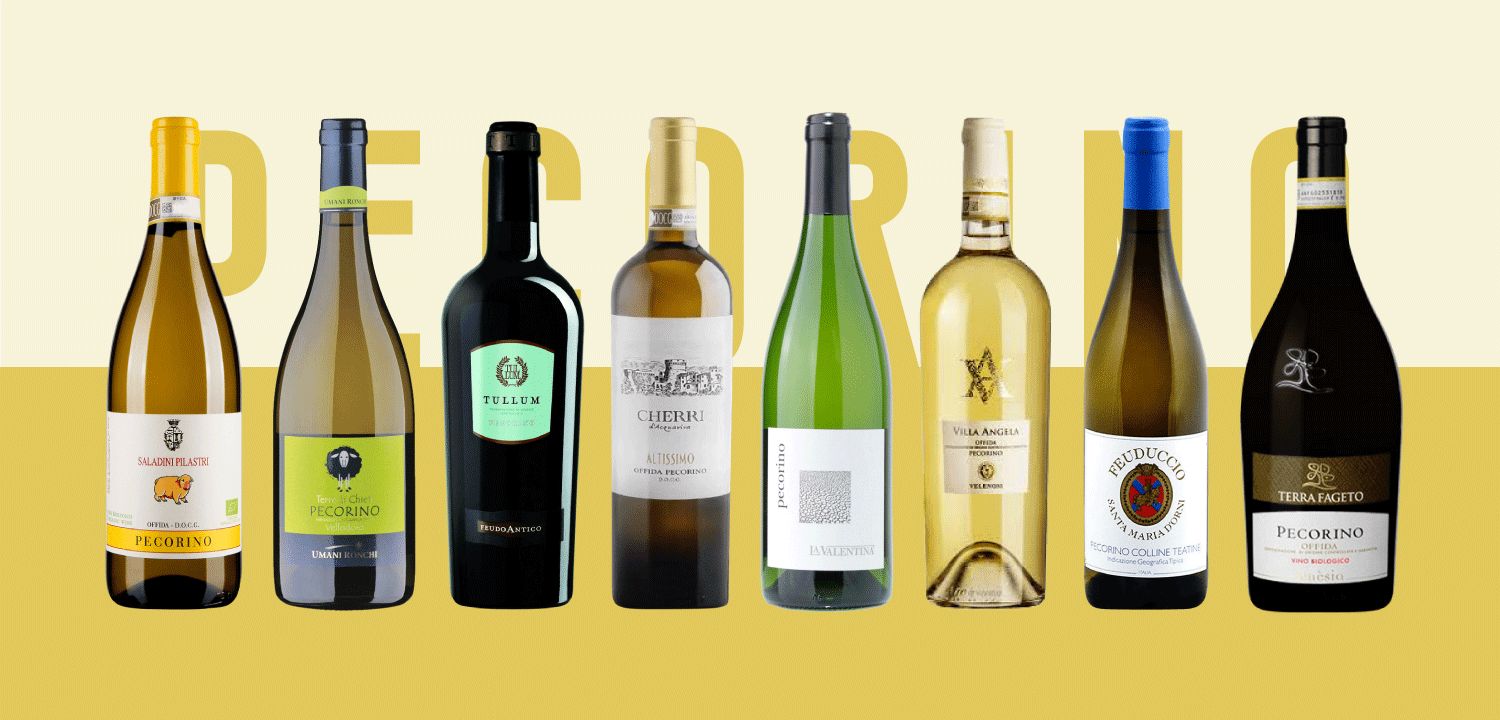
I can still recall my seminal experience of pecorino the wine (not the cheese) and it was a unique experience. I was immediately hooked to the floral perfume that came from the wines from the Offida DOCG in Marche, and wondered why I had not discovered this grape earlier. Many of those bottles reminded me of elegantly perfumed jasmine tea, something people drink a lot of in my country (China) during the summer. Not many grapes can offer that vivid, suggestive, jasmine epiphany, often adorned with restrained peachy fruit and a “mineral” seduction that extends to the crisp, chalky acidity and its textured roundness across the palate.
The aura of pecorino today belongs to Marche and Abruzzo, and both produce fresh, piquant, varietal whites. But the grape was long forsaken thanks to its low yield. By the 1970s it was facing extinction and only rediscovered its form rather recently. The credit of its success today has to go to Guido Cocci Grifoni of Marche, who saved the variety from desertion, and Cataldi Madonna of Abruzzo, who was among the first to bottle the varietal wine. Now the vineyards of pecorino have increased considerably, from fewer than a hundred hectares to over 1,200.
Pecorino itself has a name for generous offerings of both sugar and acidity, which is why the “pecora” (sheep) found in the region enjoy helping themselves to mouthfuls while idling in the vineyards, and reputedly gave the grape its pecorino name. High sugar means the wine is prone to high alcohol levels (expect many pecorinos to reach 14 percent alcohol or more), and it can be a bit rough and high-octane given that some lesser wines may struggle with acidity. The best can be often found in hillier and cooler areas and vinified to shy away from malolactic fermentation, letting the zesty, high acidity of the grape offset its ripeness. A few producers also do a concise skin contact to enhance the color and richness of the wine while building up a fuller, more vinous and mesmerizing structure on the palate (the wines from Cherri d’Acquaviva and Feudo Antico in our selection, for example).
Yet despite its recent comeback, pecorino is still very much an unsung white variety, which often translates to superb value. In Italy, it is a drinkable and down-to-earth wine, while in many fine-dining restaurants around the world it is finding a niche following, often described as a sommelier’s wine. Although still rare, I could easily picture a boom of pecorino being made as orange wine in the future.
Below we have selected eight expressions of pecorinos from Marche (Offida DOCG) and Abruzzo (Colline Pescaresi IGT, Terre di Chieti IGT, Colline Teatine IGT as well as Tullum, one of the tiniest and youngest DOCGs in Italy) that only cost around $15 but deliver more quality than that price tag suggests. Summer is the right time to chill out with these unique bottles in your ice buckets.
– Zekun Shuai, associate editor in Beijing
8 great value pecorino wines
Saladini Pilastri Pecorino Offida 2018 – JS92
US Average Price: $10
Umani Ronchi Pecorino Terre di Chieti Vellodoro 2018 – JS92
Available at Vivino: $13.99
Feudo Antico Pecorino Tullum 2017 – JS92
International Price: $13
Cherri d’Acquaviva Pecorino Offida Altissimo 2018 – JS92
International Price: $13
Il Feuduccio Pecorino Colline Teatine 2018 – JS92
International Price: $15
Velenosi Pecorino Offida Villa Angela 2017 – JS91
Available at Wine.com: $16.99
Terra Fageto Pecorino Offida Fenèsia 2018 – JS91
International Price: $13
La Valentina Pecorino Colline Pescaresi 2018 – JS91
US Average Price: $17

